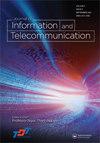Towards data fusion-based big data analytics for intrusion detection
IF 2.7
Q2 COMPUTER SCIENCE, INFORMATION SYSTEMS
Journal of Information and Telecommunication
Pub Date : 2023-05-24
DOI:10.1080/24751839.2023.2214976
引用次数: 2
Abstract
ABSTRACT Intrusion detection is seen as the most promising way for computer security. It is used to protect computer networks against different types of attacks. The major problem in the literature is the classification of data into two main classes: normal and intrusion. To solve this problem, several approaches have been proposed but the problem of false alarms is still present. To provide a solution to this problem, we have proposed a new intrusion detection approach based on data fusion. The main objective of this work is to suggest an approach of data fusion-based Big Data analytics to detect intrusions; It is to build one dataset which combines various datasets and contains all the attack types. This research consists in merging the heterogeneous datasets and removing redundancy information using Big Data analytics tools: Hadoop/MapReduce and Neo4j. In the next step, machine learning algorithms are implemented for learning. The first algorithm, called SSDM (Semantically Similar Data Miner), uses fuzzy logic to generate association rules between the different item sets. The second algorithm, called K2, is a score-based greedy search algorithm for learning Bayesian networks from data. Experimentation results prove that – in both cases – data fusion contributes to having very good results.基于数据融合的入侵检测大数据分析
本文章由计算机程序翻译,如有差异,请以英文原文为准。
求助全文
约1分钟内获得全文
求助全文
来源期刊
CiteScore
7.50
自引率
0.00%
发文量
18
审稿时长
27 weeks

 求助内容:
求助内容: 应助结果提醒方式:
应助结果提醒方式:


